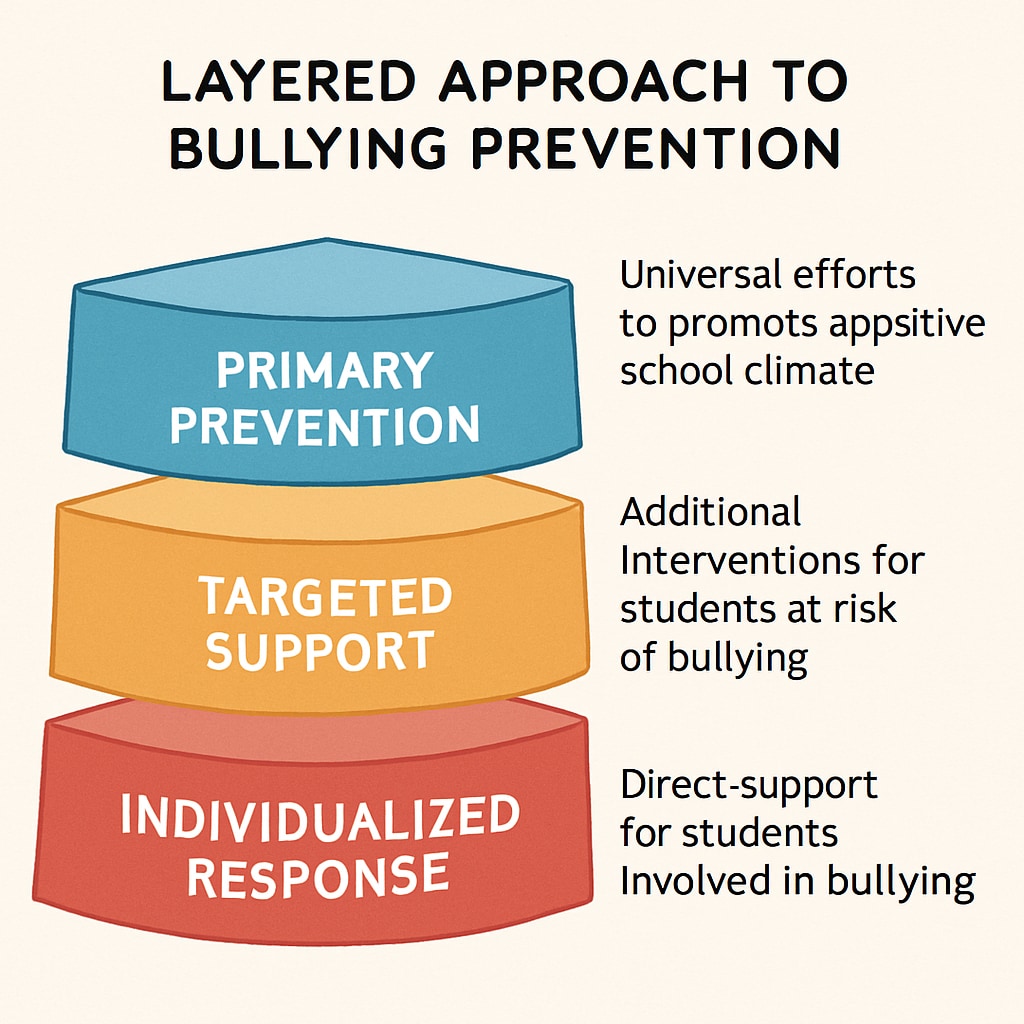Bullying prevention, school management, and behavior consequences are essential aspects of creating a safe educational environment where students can thrive. A well-designed response system can help schools address bullying effectively while promoting emotional intelligence and social responsibility among students. In this article, we present an ideal school bullying response system that blends proactive strategies, intervention layers, and educational approaches to ensure comprehensive management of bullying incidents.
Defining Bullying Behavior
Clear definitions of bullying are crucial to ensure consistent understanding and response across the school community. Bullying encompasses repeated aggressive behavior, whether verbal, physical, or psychological, that is intentional and targets vulnerability. By establishing a shared language and criteria, schools can empower teachers, staff, and students to identify and report bullying more effectively.
For example, the StopBullying.gov initiative provides valuable resources for recognizing and addressing bullying, emphasizing the importance of distinguishing it from isolated conflicts or misunderstandings.

Layered Intervention Strategies
An ideal bullying prevention system incorporates multiple intervention layers to address incidents at various levels. These layers can include:
- Primary Prevention: School-wide policies and programs, such as anti-bullying campaigns, to foster a culture of respect and awareness.
- Targeted Support: Small group interventions for students at risk of bullying or being bullied, emphasizing communication and conflict resolution skills.
- Individualized Response: Case-by-case management of severe bullying incidents, involving counseling, disciplinary action, and restorative practices.
Integrating these layers allows schools to address the root causes of bullying, provide meaningful support to affected students, and create accountability for perpetrators.
Balancing Discipline and Education
While disciplinary actions are necessary to deter bullying, an ideal system also prioritizes educational approaches to help students understand the impact of their behavior. Restorative justice practices, for instance, encourage students to take responsibility for their actions and engage in meaningful discussions with those affected.
In addition, schools can incorporate emotional intelligence training as part of their curriculum. Programs focused on empathy, self-awareness, and conflict resolution can equip students with the skills needed to foster positive relationships and navigate challenges constructively.

Engaging Stakeholders
Effective bullying prevention requires collaboration between all stakeholders, including school administrators, teachers, parents, and students. Schools can establish committees or task forces dedicated to bullying prevention, ensuring diverse perspectives are considered in policy development.
Additionally, continuous training for staff members can improve their ability to detect and respond to bullying. Resources like Britannica’s bullying overview provide valuable insights for educators seeking to enhance their knowledge.
Engaging parents through workshops and communication channels is equally important. When parents are informed and involved, they can reinforce anti-bullying messages at home and support their children in navigating challenges.
Measuring Success and Adjusting Strategies
Schools must regularly evaluate the effectiveness of their bullying prevention systems. Surveys, incident reports, and feedback from students and staff can provide valuable data to identify areas for improvement. By adopting a continuous improvement mindset, schools can refine their policies and programs, ensuring they remain relevant and impactful.
For example, schools might use anonymous student surveys to gauge the prevalence of bullying and the perceived effectiveness of interventions, making adjustments based on the findings.
As a result, schools can create an environment where every student feels safe, respected, and supported—an essential foundation for their educational and personal development.
Readability guidance: This article uses clear definitions, short paragraphs, and bullet points to summarize key ideas for easier understanding. Transition words like “however,” “therefore,” and “for example” ensure smooth flow between sections.


